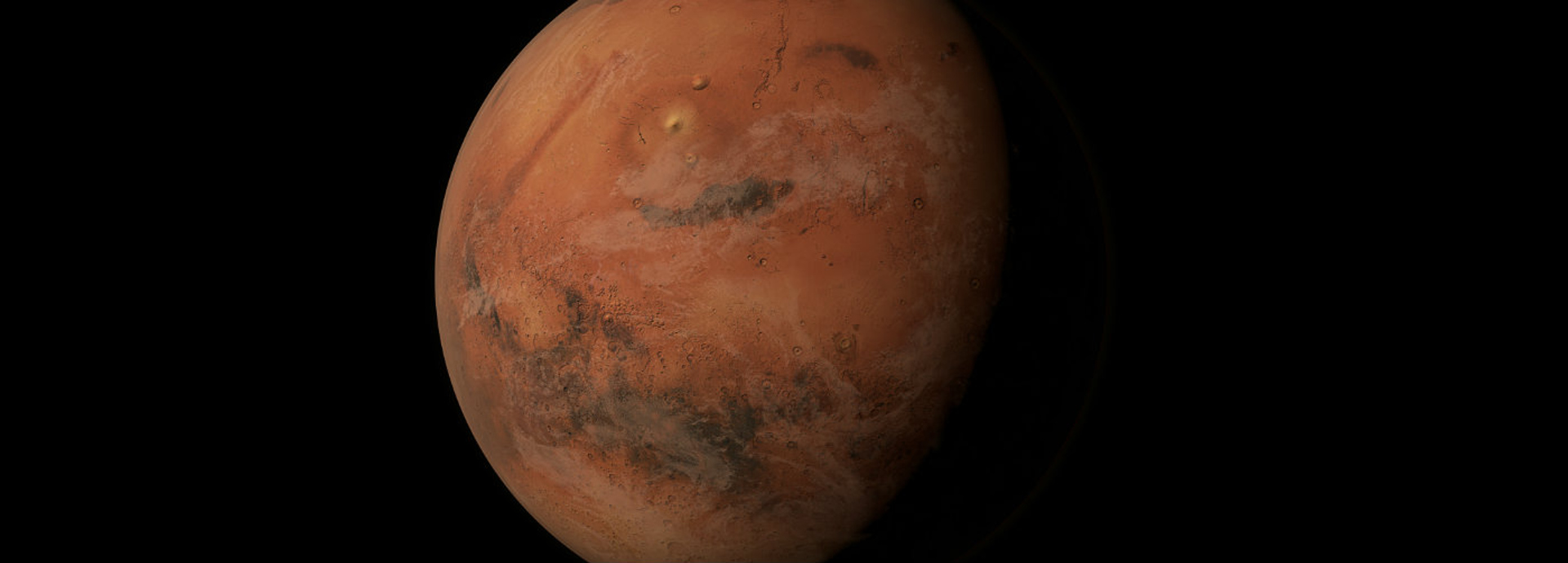A new NASA-funded study – involving the University of Stirling – has fuelled suggestions of life on Mars after discovering a historical presence of water on the Red Planet.
Dr Christian Schröder is the only UK scientist working on the Mars Exploration Rover Opportunity mission, whose research has published in the ‘Journal of Geophysical Research: Planets’.

Dr Christian Schröder is the only UK scientist working on the Mars Exploration Rover Opportunity mission.
The international team has discovered four different episodes of water activity in rock formations in a stretch of the Endeavour crater’s rim, located in the Meridiani Planum plain. Part of the formation dates back to the Noachian period, potentially making it 4.1 billion years old.
Experts indicate the findings highlight “the complexity, and likely longevity, of the hydrologic cycle at Meridiani Planum”. They are “very similar” to recent discoveries at Gale crater, on the other side of the planet, and thus provide clues to processes that were globally active on Mars.
Dr Schröder said: “The goals of the Mars Exploration Rover Opportunity mission is to investigate a site on Mars where water may once have been present, determine the past environmental conditions at this site, and their suitability for life. Because water is the most important prerequisite for life, the mission is looking for morphological, mineralogical, and geochemical evidence of past water activity.
“This current research is a comprehensive integration of geochemical investigations of rim material along a 4.5km-long section of the rim, providing evidence of, not just one, but four different episodes of water activity.”
Rover Opportunity landed at Meridiani Planum in 2004 with the aim of searching for evidence of past liquid water on the planet’s surface. Fourteen Earth years later – or 5,000 Martian days (sols) – the mission that was supposed to last only 90 sols continues to collect data from the landing site.
The new paper contains several years’ worth of chemical observations from Opportunity, adding to the story of a complex and long-lived hydrologic history of Meridiani Planum.
During its first seven years, Opportunity traversed the Meridiani plain and studied the Burns formation, which contained sulphate-rich, basaltic sandstones – evidence that they formed in liquid water during the Hesperian period around 3-3.7 billion years ago.
In August 2011, it reached Endeavour – a 22km diameter impact crater whose heavily eroded rim exposes Noachian-aged rocks, dating back as far as 4.1 billion years.
The new paper synthesises Alpha Particle X-Ray Spectrometer (APXS) chemistry data collected along 4.5km of Endeavour’s rim, from an area known as Cape York in the north, through the Hueytown fracture area in the south.
The rover studied three distinct geologic units within the rim: the Matijevic, Shoemaker, and Grasberg formations. All three have basaltic compositions and are unique from Burns formation sandstones.
Alteration
The team found at least four episodes of alteration occurred in the Noachian and Early Hesperian periods in the region, not counting later diagenesis of the Burns formation sandstones.
The four chemical clues, suggesting the historical presence of water, are: Pre-impact alteration of regional rocks; low water / rock alteration along the disconformity between the Matijevic and Shoemaker formations; alteration along fracture zones in the rim segments; and differential mobilisation of iron and manganese, and calcium sulphate vein formation. The experts said episodes two and three possibly occurred together, but one and four were distinct.
The paper, led by Planetary Scientist, David Mittlefehldt at the NASA/Johnson Space Centre, is accompanied by a commentary piece by Abigail A Fraeman, Research Scientist with the Jet Propulsion Laboratory at the California Institute of Technology.
Ms Fraeman said: “Mittlefehldt et al. is a new addition to a rapidly expanding body of literature that surveys the diversity and complexity of Mars’ aqueous history, much of which is only discernible because of in situ exploration by rovers.
“The paper’s broad conclusion that there were, at a minimum, three temporally discrete episodes of alteration that occurred in Endeavour crater’s rim highlights the complexity, and likely longevity, of the hydrologic cycle at Meridiani Planum.”
She added: “The analyses detailed in Mittlefehldt et al. will also provide context for future findings by Opportunity as she continues to explore Endeavour crater and Meridiani Planum, almost 5,000 sols into her planned 90 sol mission.”
Dr Schröder is a Mars Exploration Rover Athena Science Team Collaborator and a member of the APXS team. He is funded by the UK Space Agency.
Background information
Media enquiries to Greg Christison, Communications Officer, on 01786 466 687 or greg.christison@stir.ac.uk

